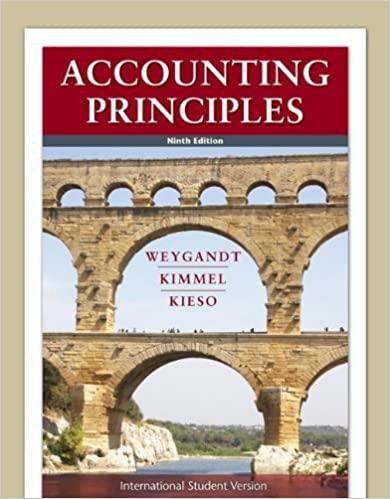Answered step by step
Verified Expert Solution
Question
1 Approved Answer
G Mart Wholesale Inc. Consolidated Income Statement For Fiscal Year Ended June 30 ($ Millions) 2021 2020 2019 Revenue Net Sales $ 420,800 $ 400,500
| G Mart Wholesale Inc. | |||
| Consolidated Income Statement | |||
| For Fiscal Year Ended June 30 ($ Millions) | 2021 | 2020 | 2019 |
| Revenue | |||
| Net Sales | $ 420,800 | $ 400,500 | $ 499,910 |
| Membership Fees | $ 8,230 | $ 7,560 | $ 5,585 |
| Total Revenue | $ 429,030 | $ 408,060 | $ 505,495 |
| Operating Expenses | |||
| Mechandising Costs | $ 321,500 | $ 320,000 | $ 373,400 |
| Selling, General and Administrative | $ 82,650 | $ 71,600 | $ 105,310 |
| Asset Impairment Expense | $ 120 | $ 180 | $ 150 |
| Total Operating Expenses | $ 404,270 | $ 391,780 | $ 478,860 |
| Operating Income | $ 24,760 | $ 16,280 | $ 26,635 |
| Other Income (expense) | |||
| Interest Expense | $ (260) | $ (240) | $ (260) |
| Interest Income and Other, Net | $ 60 | $ 52 | $ 59 |
| Income Before Taxes | $ 24,560 | $ 16,092 | $ 26,434 |
| Provision for income taxes | $ 6,140 | $ 4,023 | $ 6,609 |
| Net Income Including Noncontrolling Interest | $ 18,420 | $ 12,069 | $ 19,825 |
| Net Income Attributable to Noncontrolling Interest | $ (32) | $ (51) | $ (66) |
| Net Income Attributable to G Mart | $ 18,388 | $ 12,018 | $ 19,759 |
| G Mart Wholesale Inc. | |||
| Consolidated Balance Sheet | |||
| As at June 30 ($ million) | 2021 | 2020 | |
| Assets | |||
| Current Assets | |||
| Cash and Cash Equivalents | $ 7,761 | $ 6,762 | |
| Short-term Investment | $ 3,590 | $ 1,940 | |
| Receivables, Net | $ 6,280 | $ 5,612 | |
| Merchandise Inventories | $ 44,270 | $ 43,780 | |
| Other Current Assets | $ 120 | $ 102 | |
| Total Current Assets | $ 62,021 | $ 58,196 | |
| Property and Equipment | |||
| Land | $ 26,854 | $ 23,621 | |
| Buildings and Improvements | $ 53,666 | $ 51,664 | |
| Equipment and Fixtures | $ 48,503 | $ 39,586 | |
| Construction in Progress | $ 1,812 | $ 664 | |
| Gross Property and Equipment | $ 130,835 | $ 115,535 | |
| Less Accumulated Depreciation and Amortization | $ (16,625) | $ (14,552) | |
| Net Property and Equipment | $ 114,210 | $ 100,983 | |
| Other Assets | $ 1,125 | $ 983 | |
| Total Assets | $ 177,356 | $ 160,162 | |
| $ Millions Except Per Value and Share Data | 2021 | 2020 | |
| Liabilities and Equity | |||
| Current Liabilities | |||
| Accounts Payable | $ 27,060 | $ 26,090 | |
| Current Portionn of Long-Term Debt | $ 7,830 | $ 9,660 | |
| Accrued Salaries and Benefits | $ 6,500 | $ 7,000 | |
| Accrued Member Rewards | $ 850 | $ 810 | |
| Deferred Membership Fees | $ 680 | $ 690 | |
| Other Current Liabilities | $ 2,216 | $ 2,212 | |
| Total Current Liabilities | $ 45,136 | $ 46,462 | |
| Long-Term Debt Excluding Current Portion | $ 38,194 | $ 42,614 | |
| Other Liabilities | $ 5,510 | $ 4,340 | |
| Total Laibilities | $ 88,840 | $ 93,416 | |
| Equity | |||
| Preffered Stock, $0.05 per value | |||
| 800,000,000 Shares Authorized; No Shares Issued/Outstanding | $ - | $ - | |
| Common Stock $0.05 Par Value; | |||
| 900,000,000 Authorized; | |||
| 437,524,000 and 437,952,000 Shares Issued and Outstanding | $ 22 | $ 22 | |
| Additional Paid in Capital | $ 33,500 | $ 35,420 | |
| Accumlated Other Comprehensive Loss | $ (1,006) | $ (1,221) | |
| Retained Earnings | $ 55,620 | $ 32,105 | |
| Total G Mart Shareholders Equity | $ 88,136 | $ 66,326 | |
| Noncontrolling Interest | $ 380 | $ 420 | |
| Total Equity | $ 88,516 | $ 66,746 | |
| Total Laibilities and Equity | $ 177,356 | $ 160,162 |
- Compute net non-operating obligations (NNO) for 2021 and 2020. NNO is calculated as non-operating liabilities less non-operating assets.
Confirm the relation: NOA = NNO + Total equity.
- Compute return on equity (ROE) for 2021.
- Infer the non-operating return component of ROE for 2021.
- Comment on the difference between ROE and RNOA. Why companies need to calculate RNOA. What does the ROE and RNOA suggest about G Marts use of equity capital?
- Compute G Marts current ratio and quick ratio for 2021 and 2020. Comment on any observed trends.
- Compute G Marts times interest earned and its liabilities-to-equity ratios for 2021 and 2020. Comment on any noticeable change.
- Summarize your findings about the companys liquidity and solvency. Do you have any concerns about G Marts ability to meet its debt obligations?
Step by Step Solution
There are 3 Steps involved in it
Step: 1

Get Instant Access to Expert-Tailored Solutions
See step-by-step solutions with expert insights and AI powered tools for academic success
Step: 2

Step: 3

Ace Your Homework with AI
Get the answers you need in no time with our AI-driven, step-by-step assistance
Get Started


